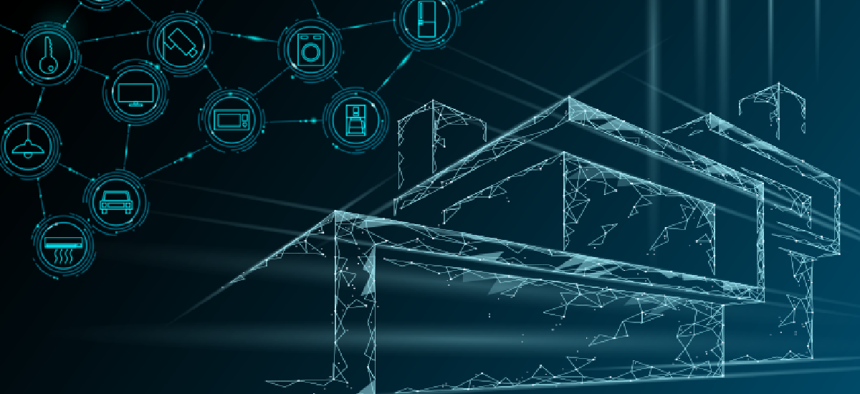Think your agency doesn’t have industrial IoT? Think again.


Connecting state and local government leaders
Building automation systems relying on internet-of-things technologies open entry points for malicious actors to attack other mission-critical networks.
First of a two-part series.
Most federal workers enter a government facility on a daily basis, communicate wirelessly with co-workers, eat at the cafeteria or take their family to a government-run medical facility -- and don’t think twice about whether the fire sprinkler system is going to operate correctly or if the elevator will stop at the right floor.
And why should they? These systems that support day-to-day government operations traditionally have posed little to no risk to public safety. They just work. Yet digital transformation is changing the game. Next-generation building automation systems that run more efficiently and reduce operating expenses depend on everything from sensors to actuators being connected or “smart.” They rely on data that can be analyzed in real time to make decisions, like turning the lights off when no movement is detected for a period of time. With increased connectivity, however, comes new risks.
Previously air-gapped or physically isolated networks -- systems running building automation, water/waste water environments and distribution centers -- are now connected to external networks, where potentially damaging impacts to human safety and operational productivity can occur. Furthermore, these newly connected systems open potential entry points for malicious behavior into other mission-critical networks.
Industrial internet-of0things (IIoT) or cyber-physical systems are “engineered systems that orchestrate sensing, computation, control, networking and analytics to interact with the physical world (including humans) and enable safe, real-time, secure, reliable, resilient and adaptable performance,” according to Gartner. Though not necessarily categorized as critical infrastructure based on the Department of Homeland Security's definition, IIoT environments should be given the same security consideration as critical infrastructure since these systems are so vital to the agency “… that their incapacitation or destruction would have a debilitating effect on security, national economic security, national public health or safety, or any combination thereof.”
How should agencies identify and understand the potential risk landscape introduced by IIoT environments? First, they need to know they exist.
Understand the landscape
Many IT departments may not know about all the different operational networks or technologies in their organization, nor are they aware of those that are transitioning from legacy proprietary communications to IP-based networks. For instance, many agency facilities have transitioned or will soon transition to connected and automated technology to control functions such as environmental systems (HVAC, data center cooling, etc.), elevator controls, back-up power, fire suppression, facility security and access management. Many have systems that support site-to-site communications such as wireless or satellite.
To maintain these systems. some agencies rely on contractors who may have trusted connectivity to internal networks, thereby introducing a risk vector that could compromise critical systems. The high-profile Target breach in 2013 is an example of an IIoT compromise caused by a contractor. While it was reported that Target’s security measures seemed to be adequate, the company allowed a mom-and-pop HVAC vendor with inadequate protections onto its network.
Unfortunately, agencies do not get to decide whether they will be a target for external or internal threats. That means IT staff must fully understand the network -- what’s connected to it and how it operates -- everything from hardware and software inventory, to vulnerabilities and communication patterns before someone else takes advantage of any loophole. Fortunately, all networks are defendable, and agencies must lay the foundation for an effective risk mitigation strategy.
Mitigate IIoT risk
While IIoT may be a new environment to understand and secure, agencies can still apply foundational cybersecurity controls to quickly reduce risk and boost protection. These controls are fundamental techniques that provide the most visibility and protection against malicious activity. In fact, they are the basis of most formal industry cybersecurity frameworks, such as the National Institute of Standards and Technology's Cybersecurity Framework, NIST SP 800-82 for industrial environments and NIST SP 800-53. Agencies can start by addressing security basics:
- Asset inventory and discovery of hardware and software.
- Network segmentation.
- Vulnerability management.
- Change management.
- Network management.
- Centralized log management.
These foundational controls should be the basis for a comprehensive IIoT risk mitigation strategy.
IIoT has introduced new blind spots. Agencies must learn what smart, connected equipment is doing, who it is communicating with and what vulnerabilities it may have.
In the second part of this series, we outline the three key steps to establishing an IIoT risk mitigation strategy.
NEXT STORY: What airports can teach us about API security




